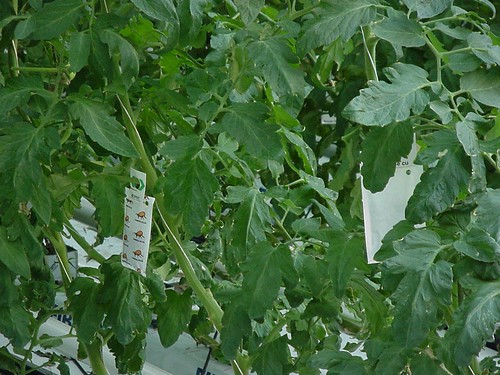Kawalan Biologi merujuk kepada penggunaan sesuatu organisma untuk mengawal pembiakan atau populasi organisma lain yang mendatangkan kerosakkan. Ia selalunya merujuk kepada penggunaan kumbang, lebah dan seumpamanya untuk mengawal teritip, aphid benah atau lalat putih. Definasi ini juga termasuk bakteria parasit, kulat dan nematodes yang sering menyerang tanaman hidroponik atau fertigasi.
Terdapat lebih dari 72 spesis serangga pemangsa dan parasit untuk mengawal 60 spesis serangga perosak. Ramai pengusaha tanaman hidroponik di seluruh dunia sekarang ini beralih kepada teknik ini kerana;
Terdapat lebih dari 72 spesis serangga pemangsa dan parasit untuk mengawal 60 spesis serangga perosak. Ramai pengusaha tanaman hidroponik di seluruh dunia sekarang ini beralih kepada teknik ini kerana;
- Kos racun serangga yang semakin mahal
- Sangat sukar untuk menjadualkan aktiviti meracun kerana setiap racun mempunyai jarak waktu yang dibolehkan untuk digunakan sebelum hasil dituai
- Hasil yang berkurangan disebabkan oleh faktor impak keracunan yang terdapat pada bahan tersebut
- Kesan ke atas manusia terutama para pekerja di ladang hidroponik yang terlalu kerap meracun boleh membahayakan kesihatan. Kos untuk menanggung rawatan pekerja oleh pihak pengusaha sekiranya mereka jatuh sakit akibat keracunan juga adalah tinggi.
- Lebah yang selalunya digunakan oleh pengusaha Hidroponik terutamanya untuk tanaman tomato dan lada Bengala boleh mati sekiranya terkena racun serangga
- Kesedaran umum tentang bahaya racun serangga dan harga sayuran dan hasil tanaman yang 'bebas racun' lebih mahal dan lebih laku di pasaran
Biological Control is the use of one organism (beneficial) to control another (pest). Often used to refer to beneficial insects such as wasps, bugs or mites that are used to control such pests as white flies, thrips or aphids. This term can also apply to parasitic bacteria, fungi and nematodes .
*Note that there are at least 72 species of predators/parasites for 60 pest species
Many growers, especially greenhouse hydroponic growers worldwide, began returning to biological control due to:the development of pesticide resistant pest populations
*Note that there are at least 72 species of predators/parasites for 60 pest species
Many growers, especially greenhouse hydroponic growers worldwide, began returning to biological control due to:the development of pesticide resistant pest populations
- the high cost of pesticides
- the difficulty in observing “harvest restrictions”, the delay time between application of pesticide and harvest
- the reduction in yields due to phytotoxicity of the pesticides
- the fact that DDT and other chemical pesticides were persistent in the environment and affected other species than those intended (i.e., DDT which caused thinning and brittleness of the eggs of the California Condor, death of the chicks, and decreased populations almost to the point of extinction)
- the increased concern with exposure of greenhouse workers to pesticides and, for the consumer, of exposure to pesticide residues on the produce
- the use of bumble bees in the greenhouse to pollinate the crop, especially tomatoes and peppers. Pesticides would not only kill the pest but the bees as well!
- the fact that vegetables produced “pesticide free” command a higher price at the market!

No comments:
Post a Comment